
What is Esotherism?

Esoterism: (countable and uncountable, plural esoterisms) The inward forms of faith and religion; transcendence, mystic experience, and internal realizations of the Divine. Being esoteric.
“Esotericism is a science — essentially the science of the soul of all things — and has its own terminology, experiments, deductions and laws (The opposite of exotericism)”. (“Education in the New Age” by Alice Bailey, p. 64)
Esotericism: “The philosophy of the evolutionary process both in man and the lower kingdoms in nature. The science of the accumulated wisdom of the ages. Presents a systematic and comprehensive account of the energetic structure of the universe and of man’s place within it. Describes the forces and influences that lie behind the phenomenal world. Also, the process of becoming aware of and gradually mastering these forces.” (“Maitreya’s Mission III” by Benjamin Creme, p. 609)
“Esotericism might be seen more as the philosophy of the evolutionary process, and occultism [meaning “hidden”] as the science of the energies which bring that process about.” (“The Ageless Wisdom Teaching” by Benjamin Creme, p. 5) “In its essence esotericism is the art of consciously recognizing that all existence, manifested in its myriad variations of form and quality, is fundamentally based on energy.” (“Bridges” by Aart Jurriaanse, p. 233) “The Ageless Wisdom Teaching, or esotericism as it is often called, is not a religion. It is not, strictly speaking, a philosophy; it is not an art or a science, but it has something of all of these. |
Esoteric Philisophy and Religion by The Editors of Encyclopedia Brittanica
Esoteric, the quality of having an inner or secret meaning. This term and its correlative exoteric were first applied in the ancient Greek mysteries to those who were initiated (eso, “within”) and to those who were not (exo, “outside”), respectively. They were then transferred to denote the distinction supposedly drawn by certain philosophers between the teaching given to the whole circle of their pupils and that containing a higher and secret philosophy which was reserved for a select number of privileged disciples. This distinction was probably adopted by the Pythagoreans and was also attributed to Plato and, by some late writers, to Aristotle. Esoteric in the sense of mystic is also used to describe certain schools of Buddhism.
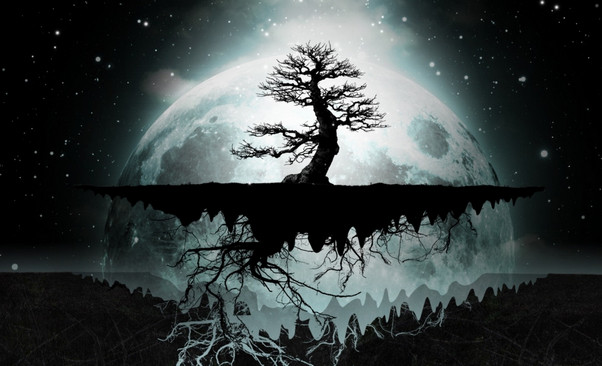
Western esotericism From Wikipedia, the free encyclopedia
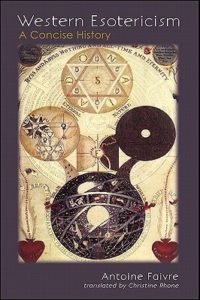 Western esotericism (also called esotericism and esoterism), also known as the Western mystery tradition, is a term under which scholars have categorised a wide range of loosely related ideas and movements which have developed within Western society. These ideas and currents are united by the fact that they are largely distinct both from orthodox Judeo-Christian religion and from Enlightenment rationalism. Esotericism has pervaded various forms of Western philosophy, religion, pseudoscience, art, literature, and music, continuing to affect intellectual ideas and popular culture.
Western esotericism (also called esotericism and esoterism), also known as the Western mystery tradition, is a term under which scholars have categorised a wide range of loosely related ideas and movements which have developed within Western society. These ideas and currents are united by the fact that they are largely distinct both from orthodox Judeo-Christian religion and from Enlightenment rationalism. Esotericism has pervaded various forms of Western philosophy, religion, pseudoscience, art, literature, and music, continuing to affect intellectual ideas and popular culture.
The idea of categorising a wide range of Western traditions and philosophies together under the rubric that we now term “esotericism” developed in Europe during the late seventeenth century. Various academics have debated the precise definition of Western esotericism, with a number of different options proposed. One scholarly model adopts its definition of “esotericism” from certain esotericist schools of thought themselves, treating “esotericism” as a perennialist hidden, inner tradition. A second perspective sees esotericism as a category that encompasses world-views which seek to embrace an “enchanted” world-view in the face of increasing disenchantment. A third views Western esotericism as a category encompassing all of Western culture’s “rejected knowledge” that is accepted neither by the scientific establishment nor by orthodox religious authorities.
 The earliest traditions which later analysis would label as forms of Western esotericism emerged in the Eastern Mediterranean during Late Antiquity, where Hermetism, Gnosticism, and Neoplatonism developed as schools of thought distinct from what became mainstream Christianity. In Renaissance Europe, interest in many of these older ideas increased, with various intellectuals seeking to combine “pagan” philosophies with the Kabbalah and with Christian philosophy, resulting in the emergence of esoteric movements like Christian theosophy. The 17th century saw the development of initiatory societies professing esoteric knowledge such as Rosicrucianism and Freemasonry, while the Age of Enlightenment of the 18th century led to the development of new forms of esoteric thought. The 19th century saw the emergence of new trends of esoteric thought that have come to be known as occultism. Prominent groups in this century included the Theosophical Society and the Hermetic Order of the Golden Dawn, which influenced the development of Thelema. Modern Paganism developed within occultism, and includes religious movements such as Wicca. Esoteric ideas permeated the counterculture of the 1960s and later cultural tendencies, from which emerged the New Age movement in the 1970s.
The earliest traditions which later analysis would label as forms of Western esotericism emerged in the Eastern Mediterranean during Late Antiquity, where Hermetism, Gnosticism, and Neoplatonism developed as schools of thought distinct from what became mainstream Christianity. In Renaissance Europe, interest in many of these older ideas increased, with various intellectuals seeking to combine “pagan” philosophies with the Kabbalah and with Christian philosophy, resulting in the emergence of esoteric movements like Christian theosophy. The 17th century saw the development of initiatory societies professing esoteric knowledge such as Rosicrucianism and Freemasonry, while the Age of Enlightenment of the 18th century led to the development of new forms of esoteric thought. The 19th century saw the emergence of new trends of esoteric thought that have come to be known as occultism. Prominent groups in this century included the Theosophical Society and the Hermetic Order of the Golden Dawn, which influenced the development of Thelema. Modern Paganism developed within occultism, and includes religious movements such as Wicca. Esoteric ideas permeated the counterculture of the 1960s and later cultural tendencies, from which emerged the New Age movement in the 1970s.
Although the idea that these varying movements could be categorised together under the rubric of “Western esotericism” developed in the late 18th century, these esoteric currents were largely ignored as a subject of academic enquiry. The academic study of Western esotericism only emerged in the late 20th-century, pioneered by scholars like Frances Yates (1899-1981) and Antoine Faivre (born 1934). Esoteric ideas have meanwhile also exerted an influence in popular culture, appearing in art, literature, film, and music.

Esoteric Hinduism and Western Esoteric Traditions
By David Frawley (Pandit Vamadeva Shastri)
Global Esoteric Traditions
Esoteric, mystical, and occult traditions have been widely connected worldwide as far back as we can trace their history. These often secret teachings cross over realms of healing, astrology, alchemy, Yoga, mantra, and meditation, emphasizing internal practices to raise our awareness to higher states of consciousness. They have been also important in European traditions, going back to the most ancient times.
 Yet these connections are not always easy to see or even recognized. Many such esoteric groups formed secret societies, particularly in European and Middle Eastern countries where they have faced extensive oppression by religious authorities. They often deliberately veiled their teachings in symbols and hid their identity and associations, retiring from the world or public scrutiny.
Yet these connections are not always easy to see or even recognized. Many such esoteric groups formed secret societies, particularly in European and Middle Eastern countries where they have faced extensive oppression by religious authorities. They often deliberately veiled their teachings in symbols and hid their identity and associations, retiring from the world or public scrutiny.
The largest number of such esoteric traditions has occurred in India, Tibet and the Himalayan region. This is because these regions honored freedom of spiritual practice and maintained an unbroken continuity of teachings of Yoga and mediation.
Spread of the Higher Teachings
Many esoteric teachings were transmitted along the Silk Trail overland, which began in China and went to the north of Tibet and India, picking up such Himalayan influences. This was the primary route how Buddhism entered into China two thousand years ago. The Silk Trail was part of other land routes from India and the Himalayas, including south through Iran in the south or north of the Black Sea.
Another important route was the Spice Trail from South India by sea, which went both to Europe through the Middle East on the western side and to China on the east. Hinduism and Buddhism spread to Indonesia, Indochina and East Asia along this path. Yet ideas also moved to the Middle East, North Africa and Europe by western maritime routes.
 Extensive trade existed between India and the Greco-Roman world, including a movement of teachers and teachings. Plotinus (third century AD) – perhaps the most important mystic philosopher of later Rome and who strongly impacted Christian mysticism and the Sufis – was said to have visited India. Another important example was Apollonius of Tyana (first century AD), who visited India and carried on Pythagorean traditions that included vegetarianism and a belief in reincarnation.
Extensive trade existed between India and the Greco-Roman world, including a movement of teachers and teachings. Plotinus (third century AD) – perhaps the most important mystic philosopher of later Rome and who strongly impacted Christian mysticism and the Sufis – was said to have visited India. Another important example was Apollonius of Tyana (first century AD), who visited India and carried on Pythagorean traditions that included vegetarianism and a belief in reincarnation.
Migratory movements of peoples also allowed for the spread of esoteric ideas and meditation practices. There was a spread of peoples along the land route from India and Afghanistan through Central Asia and into Europe going back to the dawn of history.
From Afghanistan – itself a Hindu and Buddhist kingdom until a little over a thousand years ago – were ancient trade and migration routes to the Volga, around the Black Sea and to the Danube going back many thousands of years.
Indo-Iranian Influences in Ancient Europe
The main peoples that dominated Eastern Europe in early ancient times were Iranian peoples with possible ties to Afghanistan and India. These Northern Iranian groups were older than the Persian Zoroastrian traditions, and culturally different, reflecting teachings more like the Vedas of India.
Ancient Iranian peoples like the Thracians and Scythians dominated Eastern Europe and the Balkans from well before 1000 BCE to the early centuries AD. The Thracians were the most numerous people in the ancient world according to the Greeks. Indeed the oldest cities and gold work in Europe are sites in Bulgaria going back to before 4000 BCE, like Plovdiv and Varna. Perhaps these were ancient Thracian sites.
 The Greek Orphic tradition arose from the Thracians and strongly influenced Greco-Roman esotericism. The Dionysian tradition, later very popular among the Greeks, was also connected to the Thracians. Dionysus resembles Hindu deity Shiva. Such traditions believed in rebirth and sought higher states of consciousness and ecstasy through music and chanting.
The Greek Orphic tradition arose from the Thracians and strongly influenced Greco-Roman esotericism. The Dionysian tradition, later very popular among the Greeks, was also connected to the Thracians. Dionysus resembles Hindu deity Shiva. Such traditions believed in rebirth and sought higher states of consciousness and ecstasy through music and chanting.
The Scythians followed after the Thracians. The Scythians were often enemies of the Persians as Central Asian and Eastern European Iranian peoples that had their own distinct culture. Scythian kingdoms dominated Central Asia from 1000 BCE or earlier up to the eighth century AD. Greater Scythia extended from the Danube (Scythia Minor) to the Pontic Steppes (Scythia Major) and to North India and the Tarim Basin now in China. The Scythians and related peoples ruled parts of North India and Central Asia up to the early centuries AD, with Indo-Scythian, Indo-Greek, Kushana and Huna kingdoms that had associations both with India and with their European counterparts.
Central Asian Scythian kingdoms followed Buddhist, Hindu, Zoroastrian, and Manichean influences, as well as their own indigenous traditions. The worship of Shiva and his son Skanda was common among them and frequently found upon their coins. Turkish and Mongolian groups in the region also adapted similar esoteric teachings as part of their worship of Tengri, their great deity of the Sky and the mountains, and their adaptation of Buddhism and Hinduism.
Pagan and Esoteric Traditions
Ancient DruidEuropean pagans as a whole, most known of which are the Celts and the Druids, had similar esoteric traditions in Western Europe throughout their own long history, with suggestions of influences from the East, including a belief in rebirth, the use of philosophy, astrology and yoga like practices.
There was a common extensive esoteric tradition in the ancient world that seems to become stronger the further back we go in time, which was gradually displaced and submerged with the onset of Christianity, though mystical Christianity borrowed much from it.
 These esoteric traditions developed into secret societies. We find Hermetic, Gnostic, Manichean, and Zoroastrian influences common in esoteric traditions of Europe extending into the Middle Ages. The Manicheans, a religious group from Syria, also honored Buddha and spread as far as China, had a strong influence on Europe. There were special crusades in Europe against such mystical and pagan groups like the Bogomils and Cathars, which had Manichean and Gnostic influences.
These esoteric traditions developed into secret societies. We find Hermetic, Gnostic, Manichean, and Zoroastrian influences common in esoteric traditions of Europe extending into the Middle Ages. The Manicheans, a religious group from Syria, also honored Buddha and spread as far as China, had a strong influence on Europe. There were special crusades in Europe against such mystical and pagan groups like the Bogomils and Cathars, which had Manichean and Gnostic influences.
Meanwhile older pagan traditions survived in Europe until the fourteenth century, particularly in the Baltic region, notably Lithuania, which were the subject to brutal crusades against them by the Teutonic Knights. In many countries of Europe from Ireland to Russia older pagan traditions have survived in hiding, in the background, or by adopting Christian forms and symbols.
Much of the Renaissance in Europe was based upon bringing back older pagan ideas and esoteric traditions, including Hermetic and Neo-Platonic ideas extending to reincarnation. Unfortunately, the mystical and astrological side of the Renaissance teaching was soon suppressed by the church.
The Mongols under Genghis Khan and the Golden Horde had Buddhist, Taoist and Shamanic influences that reached Europe and Iran starting in the thirteenth century. The Golden Horde ruled the Eastern European region as far as the Danube for several centuries, only later adapting Islam.
Alchemy, magic and astrology were common esoteric traditions up to the eighteenth century, with connections worldwide including China, India, the Middle East and Europe. The Gypsies, who came from India around a thousand years ago, brought many esoteric teachings as well as music and dance.
 Such esoteric connections increased after the nineteenth century with the Theosophical movement that spread throughout the globe, and with the travel of great Yoga gurus to the West starting with Swami Vivekananda at the turn of the twentieth century.
Such esoteric connections increased after the nineteenth century with the Theosophical movement that spread throughout the globe, and with the travel of great Yoga gurus to the West starting with Swami Vivekananda at the turn of the twentieth century.
Today there is a large group of neo-pagan traditions in Europe and America, from Celtic, Slavic, Baltic, and Germanic backgrounds, as well as renewed interest in Greco-Roman and Hellenic traditions extending to ancient Egyptian and Babylonian traditions, and indigenous traditions overall. This group is increasing as the interest in orthodox Christianity declines and reviving many of the esoteric sides of these traditions
Esoteric Hinduism as a Point of Synthesis
Probably the oldest and most extensive esoteric tradition is that of Hinduism or Sanatana Dharma, the Eternal Tradition. Hinduism is the world’s largest and oldest pagan and pluralistic tradition, with Yoga, Tantra and Veda enshrined within it as a treasure house of cosmic knowledge.
 Yet Hinduism is not a religion as a faith or belief based tradition. It is a way of secret knowledge. While Tantra is the most well known form of Hindu esotericism, all Hindu Yoga and Vedic traditions have similar concerns and practices. Esoteric Hinduism holds perhaps the keys not only to ancient pagan spirituality but also to much of the world’s mysticism.
Yet Hinduism is not a religion as a faith or belief based tradition. It is a way of secret knowledge. While Tantra is the most well known form of Hindu esotericism, all Hindu Yoga and Vedic traditions have similar concerns and practices. Esoteric Hinduism holds perhaps the keys not only to ancient pagan spirituality but also to much of the world’s mysticism.
Today we are at a new phase in the comparison, revival, and reintegration of ancient esoteric traditions, which deemed pagan or primitive by modern scholarship were not given their proper regard or study.
Many of these esoteric movements are still distorted and misunderstood, looked upon as cults, as dangerous forms of occultism, or as types of mind control. Yet the deeper yogic, psychological and philosophical side of the same teachings is also becoming popular, and countering this deep seated negativity.
 What is called Tantra in Hindu and Buddhist circles and what was called magic or alchemy in the West are kindred in many ways. In India occultism, meditation and devotion were often pursued together and part of the same body of knowledge. Yet such devotion was an honoring of the Divine within, not the dictates of church or final book of revelation.
What is called Tantra in Hindu and Buddhist circles and what was called magic or alchemy in the West are kindred in many ways. In India occultism, meditation and devotion were often pursued together and part of the same body of knowledge. Yet such devotion was an honoring of the Divine within, not the dictates of church or final book of revelation.
In dharmic traditions, there is a recognition of many cycles of civilization, of which ours is not the first or the highest, and is still lacking in the deeper knowledge that the ancients held.
Today we are entering into a new planetary age in which we can understand how such esoteric traditions can link us with the cosmic mind. It is important to reclaim these older esoteric traditions and practice them again. There is a secret light of higher knowledge hidden within them, not something fearful or dangerous. Such esoteric traditions offer individual spiritual experience and enlightenment that helps us go beyond the limitations of all organized religions. They encourage our search for inner freedom and Self-realization, which is the real goal of life and culture.
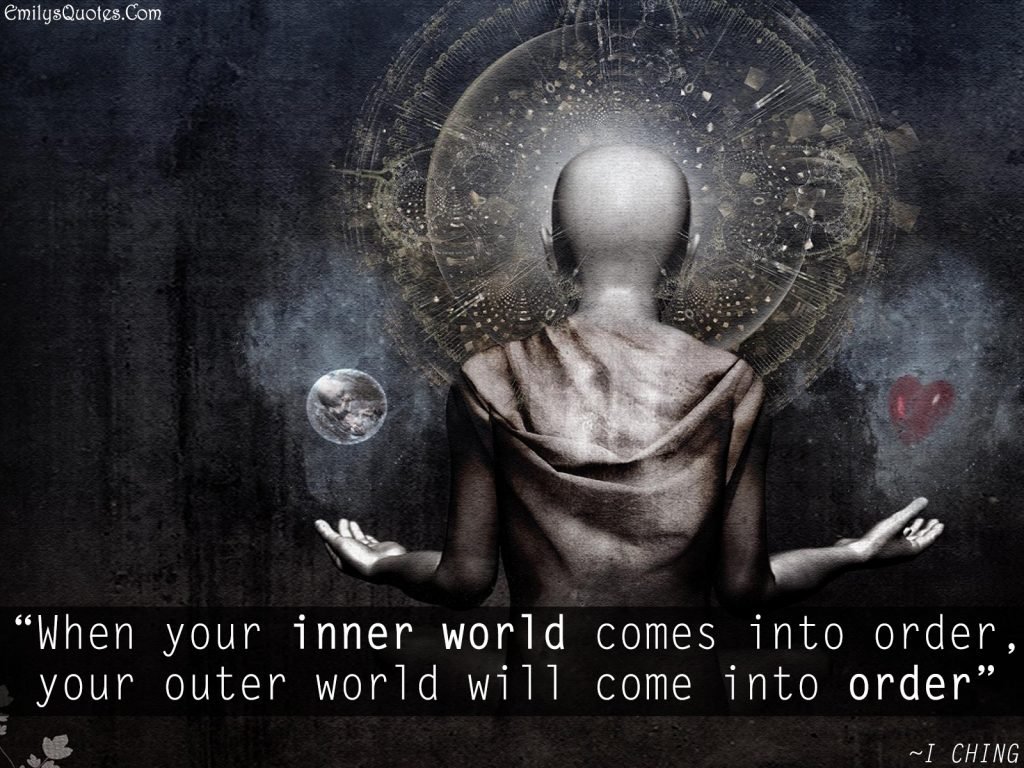
Esoteric Islam: Sufism
by Humanity Healing University – Ageless Wisdom
Sufism has existed since the earliest recorded times in the history of humanity, even though its roots are unknown. It could have originated from various Traditions of old Persia, Egypt, Greece, or many other civilizations of the ancient world. Spiritually, we can say that the Divine Mind sent many prophets and guides to open the paths of humanity through the darkness. It is said that Sufism is the “Path of the Prophets.” Sufism is known to be a school of self-knowledge, a system of higher education for the soul compiled by disciplines that facilitates the unveiling of the infinite wisdom inside of each human being. Sufism is eminently a mystic and contemplative vein geared to active contact with the Divine.
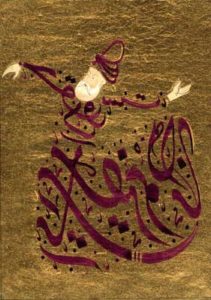 Why to think thus O men of piety
Why to think thus O men of piety
I have returned to sobriety
I am neither a Moslem nor a Hindu
I am not Christian, Zoroastrian, nor Jew
~Rumi
Brief History
The first Sufis appeared after the death of the prophet Muhammad. They were individuals who had retired to the desert to preserve their knowledge and to give continuity to their higher mystical vision and philosophy. It is said that Muhammad had supposedly entrusted to them the esoteric and mystical teachings of the spiritual doctrine of the Islam.
To practice Sufism is to walk on the path of the Divine, under the guided orientation of a Shaykh, a spiritual master. It is a profound individual experience for the initiate in the Tasawwuf; a deep desire to be connected with the Source of Creation, and the pure will to unveil its mysteries, and the intense desire to reach the source of truth, and detach from the world of illusion.
The tools of interpretation of the external world of phenomena are very diverse according to the Sufi vision: Time does not count, space and frontiers disappear, there is no limitations or negation, the Absolute Unity becomes the whole.
Definition
The word Sufi comes from Sufi, which means purity, cleanness, purification. When an individual chooses a life with no “choosing”, it gives birth to a natural purity, almost in a spiritual sense. For a Sufi, God, or Divine Mind, is more than a distant concept, it is a tangible reality. This reality is not just in heavens, it is present here and now, God being just a name for the totality of existence and plethora of manifestations.
The Internal philosophy
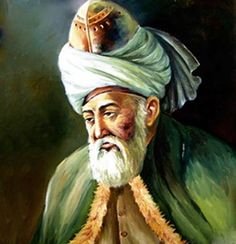
My place is the no-place
My image is without face
Neither of body nor the soul
I am of the Divine Whole.
~Rumi
The Sufi practitioners primed to teach the internal and intimate hermetic path with the Divine, through a direct and active relationship. This connective path is realized through techniques and practices such as dance, music, chanting, and poetry. In Sufism, the heart is the center of the spiritual being, not a mere an emotional aspect of the being. The Sufi have a special word for the higher contact and knowledge that is passed from one soul to another through the wisdom of the Sufis; it is called Silsila. Silsila is the actual transference of love from one heart to another.
Sufism has been recognized as representative of the practices and mystical knowledge in the pursuit of the development of consciousness and its infinite possibilities leading to the rescue of the relationship between Mankind and the Divine. The main character is universal, synthesizing elements of various doctrines, schools of knowledge and ageless wisdom gearing to a perfected dimension with the Divine.
The Sufi movement was responsible for introducing into Islamism a higher cultural degree that directly influenced the entire Western civilization during Middle Ages. Their impact is present in Judaism, Christianity and other esoteric schools of yesterday. We can perceive their inspiration through philosophy, translation of texts, the teaching of medicine, arts and science, astronomy and mathematics under the Moorish influence.
 I eliminated duality with joyous laughter
I eliminated duality with joyous laughter
Saw the unity of here and the hereafter
Unity is what I sing; unity is what I speak
Unity is what I know; unity is what I seek
~Rumi
The Awaken Human Being
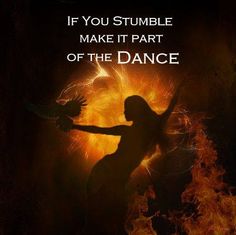 The breeze at dawn has secrets to tell you.
The breeze at dawn has secrets to tell you.
Don’t go back to sleep.
You must ask for what you want.
Don’t go back to sleep.
People are going back and forth across the doorsill
where the two worlds touch.
The door is round and open.
Don’t go back to sleep.
~Rumi
Sufism does not regard individual humans as being naturally endowed with the gifts and qualifications that many profess to have. They consider humankind to be in a state of sleep. To awaken the consciousness of man, Sufism suggests a diversity of tools and methods. They believe that there are guiding principles that allow an individual to make the correct choices, at the right time, at the proper place, as long as the process of awakening does not go against the needs, dispositions and the exterior reality of the individual.
Features
Copyright © 2018 SEAN-O-VISTA

Powered with 
 “As an esoteric science — meaning simply that it lies beyond the understanding or comprehension of the average person — it presents a systematic and comprehensive account of the evolutionary process, in man and nature, from an energetic standpoint: how the universe came to exist, how it operates, and man’s place within it. Esotericism, as it is sometimes called, is also the art of working with those energies which emanate from the highest spiritual sources. From behind the scenes, these teachings have guided and shaped civilization after civilization, leading to all the great advances in human endeavor, be they in the sciences, politics, the arts or religion.” (Benjamin Creme)
“As an esoteric science — meaning simply that it lies beyond the understanding or comprehension of the average person — it presents a systematic and comprehensive account of the evolutionary process, in man and nature, from an energetic standpoint: how the universe came to exist, how it operates, and man’s place within it. Esotericism, as it is sometimes called, is also the art of working with those energies which emanate from the highest spiritual sources. From behind the scenes, these teachings have guided and shaped civilization after civilization, leading to all the great advances in human endeavor, be they in the sciences, politics, the arts or religion.” (Benjamin Creme)

